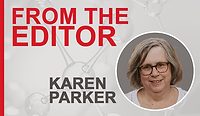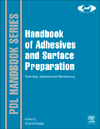From the Editor
Charting a Path Forward for Science and Engineering in the U.S.

If you happened to be traveling on an airplane, using public transit in a major U.S. city, or interacting with your healthcare provider the week of July 19, then you may have had a very personal, up-close experience with the overarching role technology plays in our modern world, learning just how inconvenient failures in software engineering can be for the average person who is just living their life, flying to visit grandma, taking the train to work, or visiting your doctor. We live in a world in which engineering and science are so tightly woven into the fabric of our everyday lives, that a failure of one system can create havoc across many parts of society. Never in the history of the world have science, engineering, and technology had a more central role in human life.
In that vein, the National Science Board recently released a policy brief that highlights the need for changes in science and engineering (S&T) within the United States. The policy brief calls for new approaches to change the U.S. S&T landscape so that the country continues to lead the world in this critical part of economic and geopolitical development. Dario Gil, chair of the National Science Board and senior vice president and director of research at IBM, announced a panel discussion with government, academic, and philanthropic leaders to explore new models to advance S&T within the country
The brief outlined three changes in U.S. S&T that need to be addressed. They include: the shift from the federal government funding the majority of U.S. research and development (R&D) to business being the primary source of R&D funding; the relationship with China, which has become the United States’ biggest competitor and collaborator in science and technology, with the country now surpassing us in research publications, patents, knowledge-and technology-intensive manufacturing, and in PhDs in STEM; and finally, the rise in the number of jobs requiring STEM skills as the United States fails to "adequately educate and nurture its domestic students and workers."
Key considerations the panel will address regarding the shift from governmental to business funding in S&T are: 1) The nation needs new partnerships and collaborations across sectors; how might they join forces to meet national needs? 2) Robust federal funding of basic research is urgently needed; how can it be most impactful? Leverage other sectors? Advance critical areas?
Key questions the panel will ask regarding China’s growing include: How can the United States remain a global leader in critical technologies? As the United States competes for the discoveries of tomorrow, what new models are required to quickly identify and mature high-potential ideas? What are the most beneficial and strategic international collaborations, and how should they be sustained?
In a press release about the new briefing, Gil stressed the growing importance of science and technology to the country, "One consequence of the success of U.S. science and technology over the last 75 years is that S&T now has the same kind of economic and geopolitical importance as trade or military alliances. It is at the heart of national economic and defense competitiveness."
The U.S. adhesives and sealants industry is dependent on continuing development in science and technology. Successful companies of the future will respond to demands for more sustainable technologies, create formulations that enhance productivity and adapt to automation, and demonstrate flexibility in the face of changing resources and supply structure. All of these things depend on robust S&T innovation.
This edition of ASI covers innovation in raw materials within the adhesives and sealants industry, including the annual raw materials and chemicals overview, which looks at several aspects of the business, including impacts from the supply chain, personnel transitions after the Great Resignation, and recent innovations. Also included this month is an article about the use of olive stones as reinforcing agents, adhesion enhancers, functional fillers, curing accelerators, and decorative particles in polymer systems; an article outlining the advantages of adding pyrogenic silica to wind turbine bonding paste formulas to optimize rheology control; and an article that explains the elements required for aircraft bonding. We also have an article covering one of my favorite topics: mixing technologies. I hope you enjoy reading our August edition. Please contact me at parkerk@bnpmedia if you have a topic of interest that you think merits inclusion in an upcoming issue. I am always interested in your ideas and opinions.
Looking for a reprint of this article?
From high-res PDFs to custom plaques, order your copy today!





